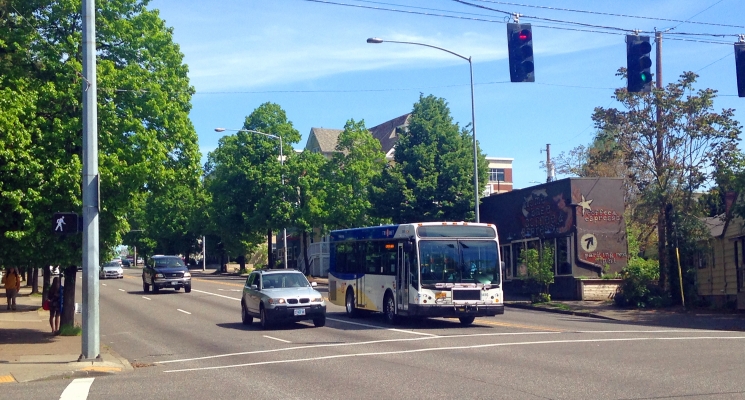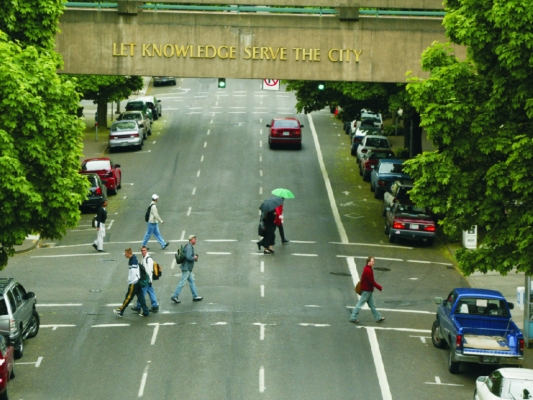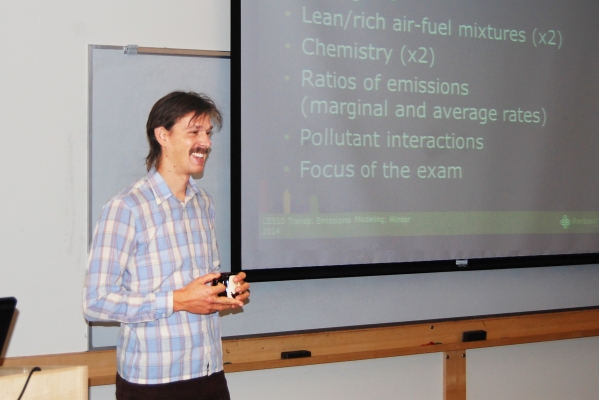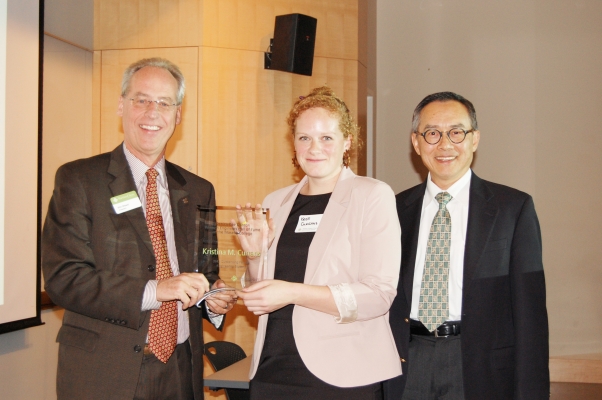Portland State University inducted graduate student Kristina Currans into the Denice Dee Denton Women Engineers Hall of Fame in a ceremony Nov. 15. Currans is the second transportation engineering student to win the student award.
Maria Klawe, president of Harvey Mudd College, took the Outstanding Female Engineer honors.
Currans’ boundless enthusiasm and dedication to her work quickly become apparent to anyone who works with her, said Kelly Clifton, an associate professor of civil engineering and director of the Oregon Modeling Collaborative. “I’ve never met someone able to manage so many things,” said Clifton, who nominated Currans for the honor.
Currans works with Clifton as a part of the Oregon Modeling Collaborative and on several OTREC research projects. “She brings a tremendous amount of energy,” Clifton said.
After graduating Oregon State University with a civil engineering bachelor’s degree in 2010, Currans soon made a name for herself in transportation circles. She started her graduate coursework at Portland State and worked during academic breaks with the Oregon Department of Transportation’s Transportation Planning Analysis Unit, home to state and regional transportation models.
“For someone who had just graduated with an undergraduate degree, she completed that internship and really impressed ODOT,” Clifton said. “To do that so quickly caught everyone’s attention.”
Currans tested and worked with the Statewide Integrated...
Read more









